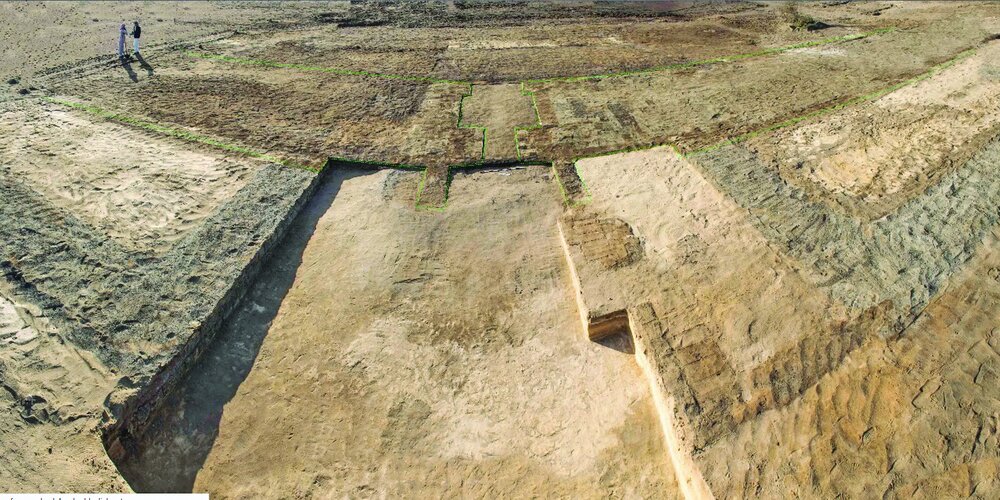Remnants of Egyptian fortress once conquered by Achaemenid Persians discovered

TEHRAN – Archaeologists in Egypt have found vestiges of a prehistorical fortress, which was once conquered by Achaemenid Persians during their expedition to the country, IRNA reported on Tuesday.
The mud-brick stronghold dates back to the 26th Dynasty, the last dynasty in which native Egyptians ruled before the Persians conquered the country in 525 BC, according to the Egyptian Ministry of Antiquities, Live Science reported.
The ruined fortress, that comprises northeastern and southeastern towers, is located at the Tell El-Kedwa site in North Sinai.
“Whoever held the fort faced a formidable enemy, as the walls showed evidence of a severe attack, the archaeologists noted,” Hisham Hussein, director general of North Sinai Antiquities, said in the statement.
In addition, the archaeologists revealed the presence of an ancient entrance to the fortress, in the form of a side gate on the northeastern side of the wall, Hussein said.
“Just to the right of this entrance are the remains of the room that may have been occupied by guards who monitored the gate.”
The excavation also uncovered an almost 280-foot-long (85 m) wall on the fortress’s southern side and the remains of houses within the western part of the fortress. One of these houses had an amulet with the name of King Psamtik I, who kicked out the Assyrians from Egypt and reunited the country when he founded the 26th Dynasty. He died in 610 B.C.
Based on this amulet, “initial studies suggest that the fortress most probably dates back to the first half of the 26th Dynasty, specifically the era of King Psamtik I,” Hussein told the Egyptian news outlet Ahram Online.
In 2008, archaeologists excavated eastern walls of the military citadel, but the fortress is so large, it took until now to unearth more of its remains, the report said.
Archaeologists have also found the ruins of a younger military outpost that was built on top of the old one.
The original fortress “is considered one of the oldest fortresses to be discovered” in the country, Ahram Online quoted Moustafa Waziri, secretary-general of the Supreme Council of Antiquities in Egypt, as saying.
The walls of the older fortress are incredibly thick, measuring nearly 23 feet (7 meters) in width, the Egyptian Ministry of Antiquities reported in a statement. It also has four towers. In contrast, newer fortresses built in the following centuries were even more protected, with walls that are 36 feet (11 m) wide and include a total of 16 towers.
Curiously, the old citadel also has chambers full of sand, broken pottery and debris, which might have helped to support its heavy walls, Nadia Khadr, head of the Central Department of Lower Egypt Antiquities, said in the statement.
On the death of Cyrus the Great, the Achaemenid Empire passed to his son, Cambyses II (reigned 529–522 BC), that according to Encyclopedia Britannica, there may have been some degree of unrest throughout the empire at the time of Cyrus’s death, for Cambyses apparently felt it necessary to secretly kill his brother, Bardiya (Smerdis), in order to protect his rear while leading the campaign against Egypt in 525.
The pharaoh Ahmose II of the 26th dynasty sought to shore up his defenses by hiring Greek mercenaries but was betrayed by the Greeks. Cambyses successfully managed to cross the hostile Sinai Desert, traditionally Egypt’s first and strongest line of defense, and brought the Egyptians under Psamtik III, son, and successor of Ahmose, to battle at Pelusium.
AFM/MQ/MG
Leave a Comment